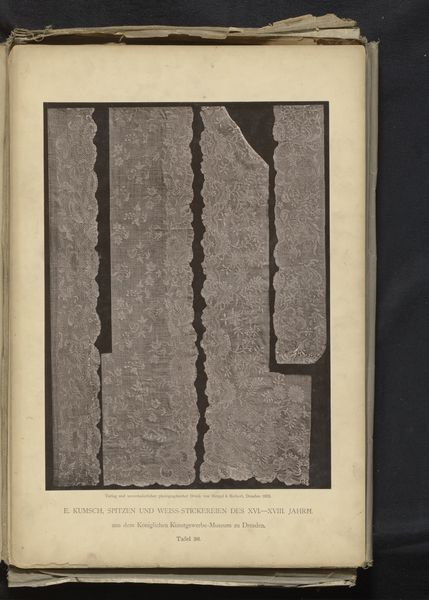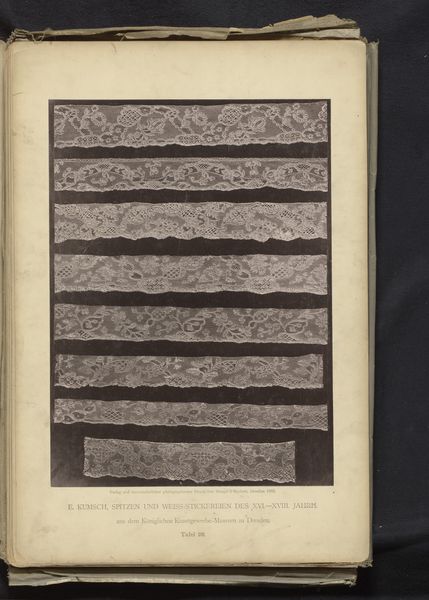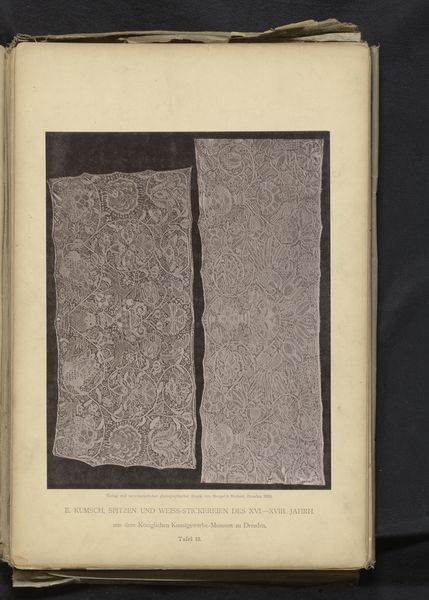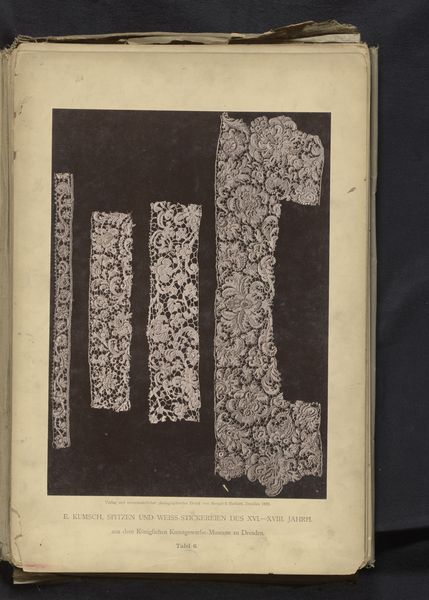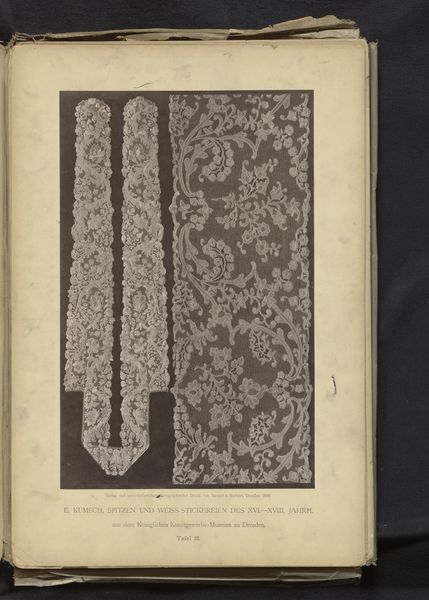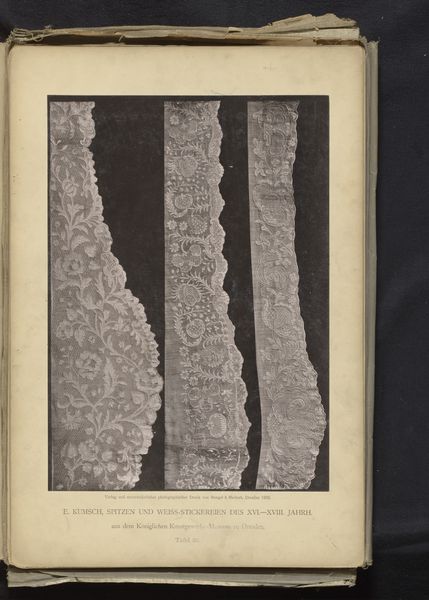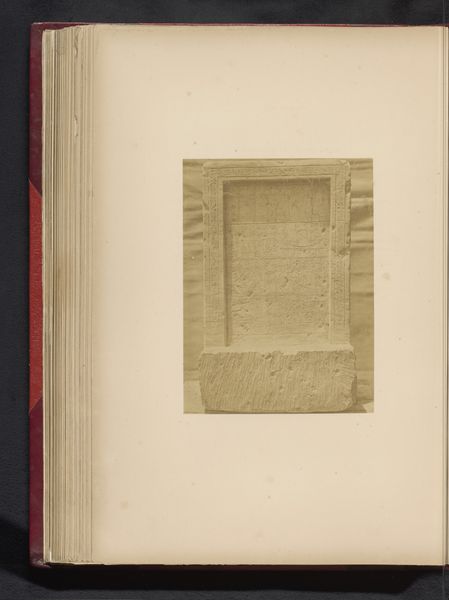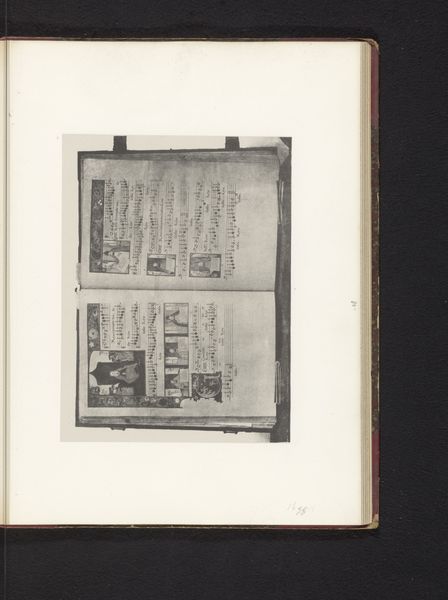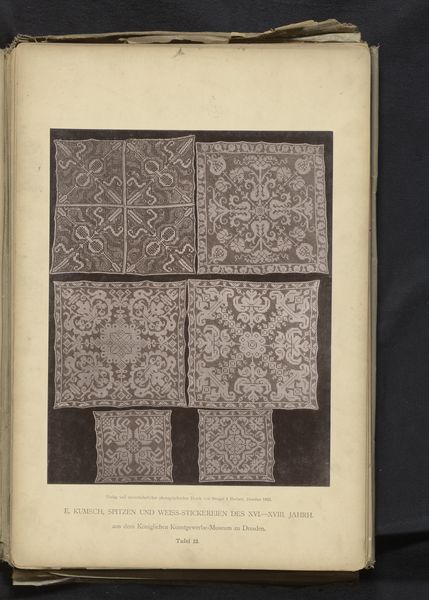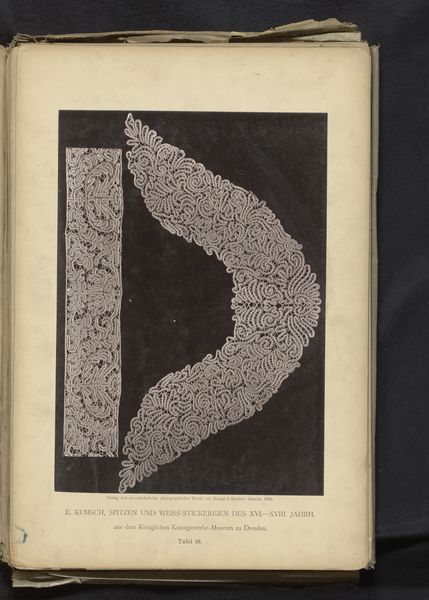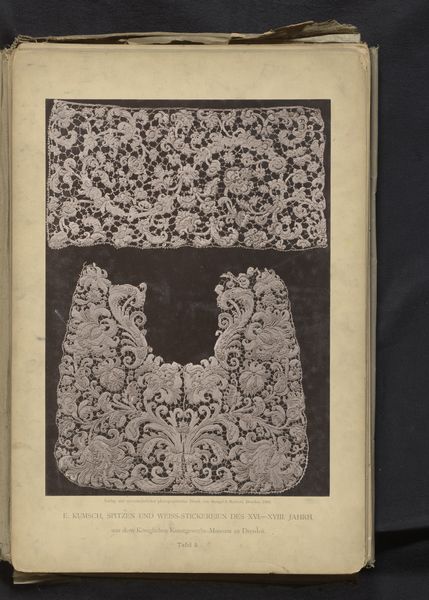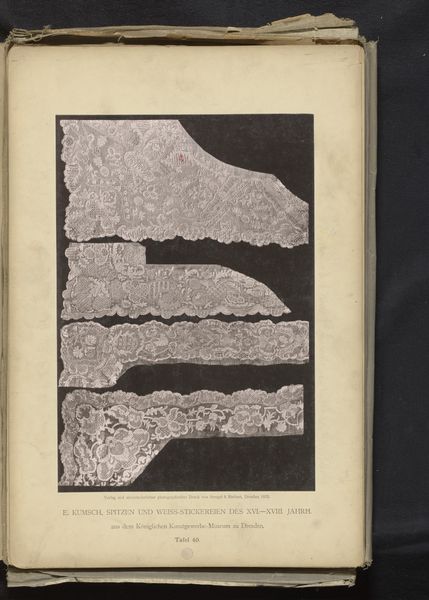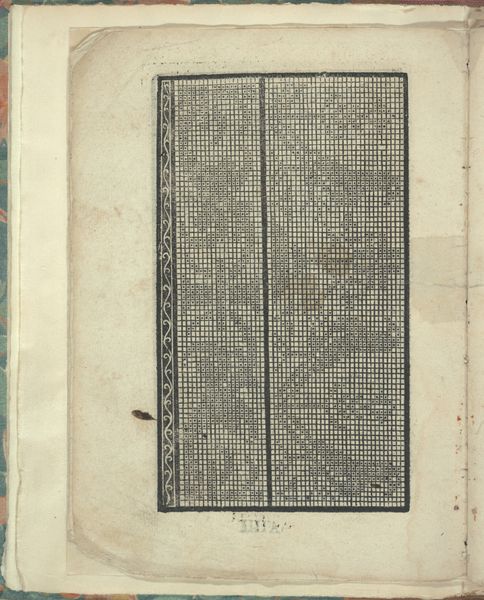
Vijf stroken Duits kant uit circa 1770 en een brede strook 18de-eeuws Duits kant, uit de collectie van het Kunstgewerbemuseum in Dresden, Duitsland 1888
0:00
0:00
anonymous
Rijksmuseum
print, photography
# print
#
photography
#
history-painting
Dimensions: height 349 mm, width 252 mm
Copyright: Rijks Museum: Open Domain
Editor: This is a print from 1888, showcasing five strips of German lace from around 1770, plus one wider piece of 18th-century German lace. The prints originate from the Kunstgewerbemuseum in Dresden, Germany, and are now at the Rijksmuseum. The high contrast makes them so striking. What catches your eye? Curator: Immediately, it is the graphic quality. The interplay of positive and negative space is rather interesting, as each section is stark, self-contained, yet united by the overall composition. Do you notice the variety in the textures presented, from the solid plain weaves to those incredibly delicate details in the lace patterns? Editor: Yes, there’s almost a gradient from solid to almost pure void within each sample. It looks almost photographic, capturing light so well. The geometry changes too, in its density and distribution. It is as if the lace’s sole purpose is its lines and shape. Curator: Precisely. Notice the rhythmic patterns embedded in the lace designs – floral motifs, geometric shapes, and elaborate curves – recurring elements in the individual components. We also have to appreciate the original artist's engagement with representing these varied qualities and the curator's considerations for compiling them into an understandable image for posterity. Editor: How does the specific arrangement, their positioning side-by-side, play into it? Is there any purpose or significance to their relative order? Curator: That arrangement invites comparison. It forces us to consider similarities and differences in design, in manufacture, and, possibly, function. The choice of contrast highlights those distinctions and makes the graphic an exercise in pure visual evaluation, as it focuses the viewers' experience in engaging the forms presented. Editor: I see. I hadn't considered that, but that close looking helps isolate features. It has changed my thinking. Curator: Indeed. Hopefully, that encourages a deeper analysis of its design elements for yourself and for our listeners!
Comments
No comments
Be the first to comment and join the conversation on the ultimate creative platform.
